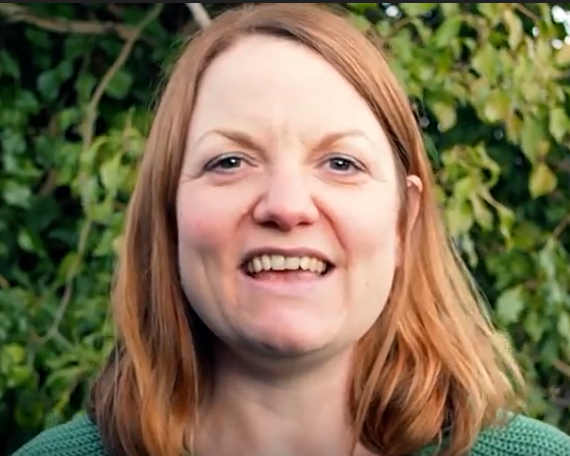
The Knowing Doing Gap.
Why the river of doubt runs so deep!
Eat well. Take regular exercise. Get to bed early. These are just a few of the common pieces of knowledge we have. And, we know will serve us well. In fact, there is so much we know. However, for many of us, it is a very real struggle to actually do it.
How is that gap between knowledge and action so wide?
The short answer, I believe, is that the river of doubt runs deep, and fast! With several reasons that prevent the crossing.
We dare not try, and might be trapped by fear. Most often, the fear is of what may not happen. What if we do not get the results we want? What if we do not do it “right”? Interesting in itself, because we usually worry about what might happen if we do.
And, “might” of course, is not immune either. The flip of not getting the results, or doing it right might mean failure. Failure, depending on how you look at it though, can be negative, or positive (with a growth mindset!).
“Great ideas! If only we could get ourselves to practice them!”
Hall, 2010
What is actually stopping us from doing what we know?
Let us explore the four key reasons (as identified by Pfeffer and Sutton, 1999) as well as neuroscientific (Hall, 2010) reasons for this gap. Building knowledge on how our brains work puts us at an advantage. It supports us in understanding how to use them to serve us best!
Using this knowledge (!), we will offer ideas for how we might challenge each gap and get to the “doing”!. Let us call it “building a bridge”. One side of the river has the “knowledge”, and on the other side is the “ready and waiting….to do it”. Just like a logical problem, we can find a way to bridge that gap.
After that exploration, you can access your 10 step experiment!
1. Pseudo-action deception
In this scenario, we have the knowledge and decided to do it, and our brain tricks (deceives!) us into believing that is done now. Yet the action hasn’t actually taken place. A decision is not action. Underneath this are two drivers:
You might know the thing you want to do, but maybe you don’t know how to do it.
It might not be that clear why you might want to do it (motivation).
Questions to build the bridge:
What have you got to gain* from taking action?
How can you find out more of the “how” about this activity?*NOTE: this may take a bit of digging, and has to go beyond the obvious
2. Inhibitions of fear
Frequently, our perception of “failure” is a negative one. In fact, we can be so afraid of failure we don’t even start. It could be fear of looking stupid (due to the how, above) or that we don’t feel “safe” doing this thing. Furthermore, we rarely consider, inaction as failure e.g. we don’t start the diet in case we don’t lose weight, yet not starting it is in itself a failure.
Questions to build the bridge:
What exactly are you afraid of? If that happens, what will you do?
What is the balance of power, between fear of doing it, and fear of not doing it? Which is strongest?
NOTE: What if the activity was treated as an “experiment” where we learn and grow from ANY results? This might help frame a motivation to get started.
3. Taboos
When we feel we will be judged by what we are doing, you might hold back. Those social taboos that may exist in our mind “I won’t be any good at it” or “I don’t want to make myself look silly”. So, we can see, these are all linked to that original “failure” concept. It could be linked to “how” we are doing it. When we feel judged, particularly in social settings, this can impact us in a significant negative way – freezing us into inaction.
Questions to build the bridge:
How might you feel, if you thought no-one was watching?
What might be different if success was guaranteed?
NOTE: We are often our own biggest critics – you know that little voice that screams “you are doing it all wrong, you may as well give up now”! Finding a supportive voice, either from within, or from your community of connections can drastically impact and improve your results.
4. Lack of structure
The human brain absolutely loves routine. And, when we want to try something new, or different, there is no routine. The brain can end up frozen by uncertainty. Not knowing what to do, when or how, causes a “threat” response and we move away from it.
Questions to build the bridge:
What do I really need to get started?
What other habits can I anchor this new thing to?
NOTE: Creating a plan means uncertainty is eliminated, and the brain reverts to competency (stable) mode, from survival (threat) state.
Hall (2010) states that taking an abstract principle, to a belief, into a decision. And, moving into actual neurological feelings will bring it to reality.
“We need to connect ideas of the mind into our everyday reality. It needs to be incorporated into our “motor programs”.
Hall, 2010
Having pulled all this thinking together, here is an activity I designed to support you in doing this.
An Experiment for you…
Try this out!

You can do this alone, but of course, it is much better with someone (like a coach!), guiding you through. Grab a pen and paper and get ready to create!
- Write in the middle of your page, the thing you want to DO
- First ask, where are you really, on the change curve?
- Are you truly in the “preparation” phase? What do you need to get there? (NOTE do not fall into the “more knowledge needed” trap!
- Visualise doing this thing; uniquely tap into the feelings, thoughts, places; access ALL your senses
- Think about how you will and want to feel, the first time AFTER you do it
- Think about what you will gain
- Examine every single inch of the way
- For example, to start swimming. Where will you go, what time, where are your goggles, your swimsuit, towel. It might sound overkill, but, it works. Every detail captured. It will elicit simple things like “what clothes do I need for this?” or “I don’t own any goggles”. It sounds crazy but each of these is a barrier to knowledge-action conversion
- As you step through, notice all questions, thoughts and emotions arising. Sit with them, feel and listen to them. Address each one, either with words or actions and create your own “action-ready” list.
- Build a simple plan. You could consider SMART principles. Key is to include everything you need to get going.
- GO!
Having a plan is the most powerful way to move forward. Consequently, you have your first step detailed. Well done!
You can read more on the neuroscience can be found in the Mind to Muscle philosophy from The Knowing Doing Gap – Michael Hall and the original work which addresses the issue in organisations is in “The Smart Talk Trap” from Pfeffer and Sutton (1999), in the Harvard Business Review.
This is one of the most frequent things I help people work with, so if you found this useful, do get in touch…(see below).

Sheela Hobden is a Coach at bluegreen Coaching. Following her own mental health battles, she now coaches individuals, runs training sessions and speaks at conferences. She has a real passion for helping medics and healthcare professionals take as much care of themselves as they do their patients in whatever life or career conundrums they face! She is also a Mentor Coach and Coach Supervisor. She has a PGCERT in Business and Personal Coaching, holds PCC member status with the ICF and is CIPD qualified. She challenges herself with ultra distance running and Ironman. Find her at www.bluegreencoaching.com or swimming in the sea, in Poole, Dorset
Get more ideas and tips by joining her newsletter tribe – sign up below!
Better still, book in to speak with her directly?
River photo by Jairo Gallegos on Unsplash
Experiment photo by Alex Kondratiev on Unsplash
